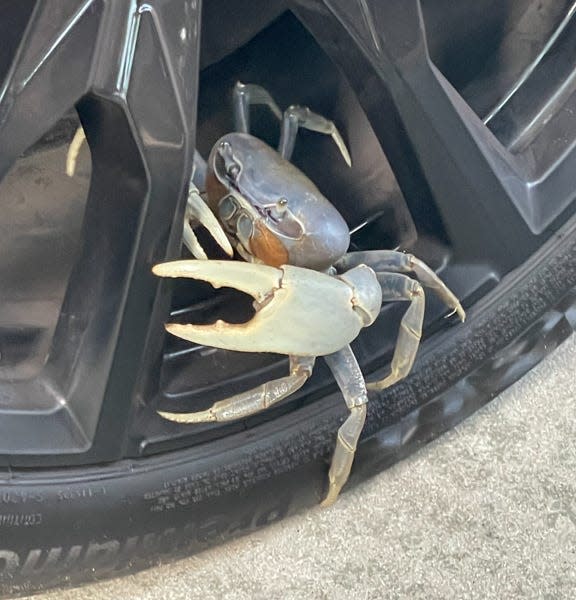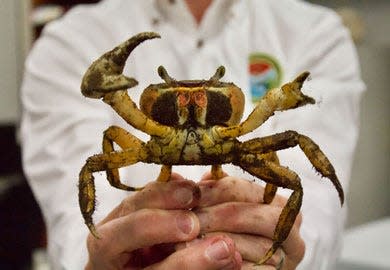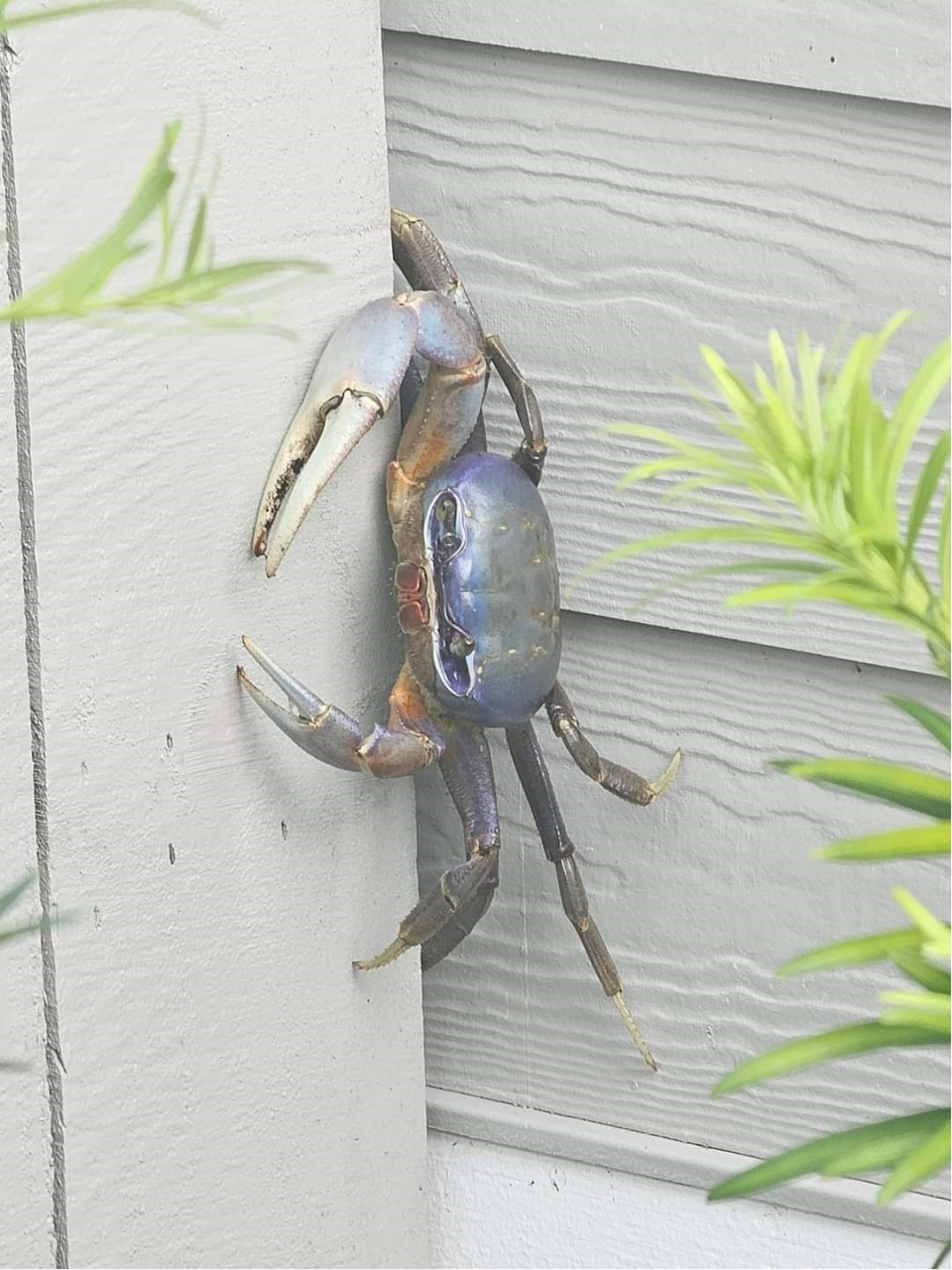Georgia joins East Coast states calling on residents to look out for the blue land crab

Blue land crabs have been creeping their way up the East Coast, prompting officials in Georgia, South Carolina and North Carolina to issue warnings about the potentially invasive species.
In a Wednesday release, the Georgia Department of Natural Resources’ Wildlife Resources Division (WRD) stated it received multiple reports about the crab, which measures 5 to 6 inches with one claw bigger than the other. The creatures' colors range from white to gray to blue, depending on its sex and age.
Officials encouraged residents who spot one to report it.
“While we are uncertain about the potential ecological and economic risks these crabs pose, we are currently concerned about damage caused by their extensive burrowing,” said Jim Page, WRD Aquatic Nuisance Species Program manager in the release. “As a new non-native species in our state, we need more information about these crabs and are asking for the public’s help.”
See the map: Where blue land crabs are moving, beyond native habitat in Florida, Texas

Where are blue land crabs found?
Blue Land Crabs are native from Brazil to South Florida, according to the Georgia release.
In Florida, blue land crab fishing is regulated with a designated season and quantity limits.
Georgia's WRD said that sightings have also been reported in South Carolina and North Carolina, far outside its natural range.
A similar release in September 2022 called on South Carolina residents to report any sightings of the blue land crab. They had been spotted occasionally in the state since 2008.
The first confirmed sighting of the blue land crab in North Carolina was summer of 2023, according to the North Carolina Environmental Quality website. Officials in North Carolina are also asking people to report any sightings.

Can you eat the blue land crab?
Yes. Though catching them may be a different story.
According to the University of Florida Institute of Food and Agricultural Sciences, the crab has been overfished for culinary consumption in the Bahamas and Caribbean.
Officials say the crabs are usually found burrowed deep in the ground and only surface when a heavy rain floods them out.
The clickity crawlers are quick to get down in their burrows, and can use that larger claw to ward off predators (or chefs). As UF puts it, "they are capable of inflicting a memorable pinch."
This article originally appeared on USA TODAY: Blue land crab: Officials ask residents to report the invasive species

